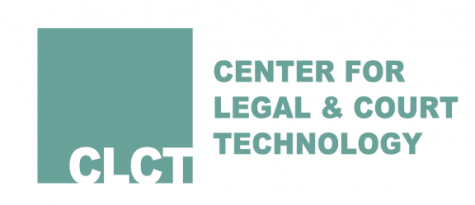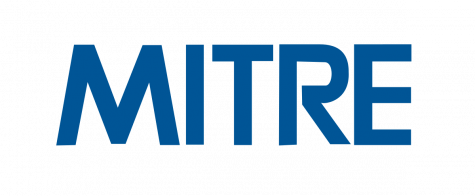Start – 2018 | End – 2024 Duration – 6 years
Several abstract models have been designed to support the development of decision-making instruments. Both their experimental implementation and their practical evaluation are hindered by the reluctance on the part of those who render legal decisions. Transparency and pedagogy efforts are necessary to ensure the relevance and reliability of these tools, which implies examining already existing decision-support techniques.

Subproject chief
Fredric Lederer
Research activities
Case studies
AI prediction solutions used in the field (and preferably with a widespread use) will be addressed in case studies. Currently, at least one of them, COMPAS, is being used in the United States for pretrial release and criminal sentencing, and merits a case study.
Inventories
The objective is to determine the extent to which AI predictions are now being used in legal professions. These predictions are either under development or under serious consideration. Initial research has identified 93 potential “solutions” designed to assist legal professionals.
Best Practices Guide
The subproject group will work towards producing a best practice guide designed to bolster reliable results while protecting legal rights and minimizing legal liability.
Governance Framework
The subproject group will explore the creation and application of general principles to be used in determining whether and how governmental organizations, including courts and adjudicative agencies, should use AI prediction.
Publications of researchers
- Fredric LEDERER, « Here There Be Dragons – The Likely Interaction of Judges with the Artificial Intelligence Ecosystem », (2020) Vol 59 - No 1 The Judges Journal ; American Bar Association | Judicial Division.
- L. Karl BRANTING, Alexander YEH, Brandy WEISS, Elizabeth MERKHOFER, Bradford BROWN, « Inducing Predictive Models for Decision Support in Administrative Adjudication », (2018) No. 10791, AI Approaches to the Complexity of Legal Systems, Lecture Notes in Computer Science.
- L. Karl BRANTING, Lisa FERRO, John ABERDEEN, Craig PFEIFER, Bradford BROWN, Mark PFAFF, Brandy WEISS, Bill LIAO, « Scalable and Explainable Legal Prediction », (2020) No. 24, Artificial Intelligence and Law, Springer, 1-26.
- Luisa DAMIANO, Paul DUMOUCHEL, « Anthropomorphism in Human–Robot Co-evolution », (2018) No. 9, Frontiers in Psychology, 468, DOI : 10.3389/fpsyg.2018.00468.
- Hannes WESTERMANN, Jaromír ŠAVELKA, Vern R. WALKER, Kevin D. ASHLEY, Karim BENYEKHLEF, « Computer-Assisted Creation of Boolean Search Rules for Text Classification in the Legal Domain », (déc. 2019), In JURIX, pp. 123-132.
- Nicolas GARNEAU, Eve GAUMOND, Pierre-Luc DÉZIEL, R. KHOURY, Luc LAMONTAGNE, « CriminalBART: A French Canadian Legal Language Model Specialized in Criminal Law », ICAIL 2021, 5 février 2021 (submitted).
- Marco GIACALONE, Sajedeh SALEHI, « Conflict Resolution with Equitative Algorithms: A Tool to Establish a European Common Ground of Available Rights », in The European Common Ground of Available Rights, edited by F. Romeo, S. Martuccelli, M. Giacalone, Ed. Scientifica Napoli, 2019.
- Francesco ROMEO, Marco GIACALONE, Marco DALL’AGLIO, « CREA Project – Conflict Resolution Equitative », Jusletter IT – The Magazine for IT and Law, (2018).
- Marco GIACALONE, Ronald P. LOUI, « Dispute Resolution with Arguments over Milestones: Changing the Representation to Facilitate Changing the Focus », Jusletter IT – The Magazine for IT and Law, (2018).
- Iria GIUFFRIDA, Fredric I. LEDERER, Nicolas VERMEYS, « A Legal Perspective on the Trials and Tribulations of AI, How Artificial Intelligence, the Internet of Things, Smart Contracts and Other Technologies Will Affect the Law », (2018) No. 68, Case Western Reserve Law Review, 747.
- Giampiero LUPO, « Regulating (Artificial) Intelligence in Justice: How Normative Frameworks Protect Citizens from the Risks Related to AI Use in the Judiciary », (2019) No. 8-2, European Quarterly of Political Attitudes and Mentalities, 75.
- Jena MCGILL, Amy SALYZYN, « Judging by Numbers: How will Judicial Analytics Impact the Justice System and its Stakeholders? », (2021) No. 44-1, Dalhousie Law Journal (forthcoming).
- Ali SADEGHIAN, Laksshman SUNDARAM, Daisy Zhe WANG, William F. HAMILTON, Karl BRANTING, Craig PFEIFER, « Semantic Edge Labeling over Legal Citation Graphs », (2018) 26(2) Artificial Intelligence and Law, Springer, 127-144.
- Huihui XU, Kevin ASHLEY, « Argumentative segmentation enhancement for legal summarization », Proceedings Sixth Workshop on Automated Semantic Analysis of Information in Legal Text, 2023.
- Juliano RABELO, Mi-Young KIM, Randy GOEBEL, Masaharu YOSHIOKA, Yoshinobu KANO et Ken SATOH, « COLIEE: Competition for Legal Information Extraction and Entailment », (2020) 35-3 Journal of Japanese Society of Artificial Intelligence 377.
Partners
|
Institutional partner |
Institutional partner |
Institutional partner |
|
Institutional partner |
Institutional partner |
Industrial partner |
|
Industrial partner |
Professional partner |
This content has been updated on 22 July 2024 at 12 h 48 min.






